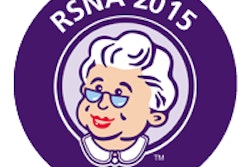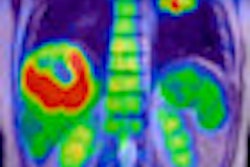CHICAGO - Recall rates for baseline screening mammograms are too high and could affect women's future compliance with screening, according to research presented Wednesday morning at the RSNA 2011 meeting.
David Gur, ScD, from the University of Pittsburgh, presented work he conducted with colleagues to evaluate radiologists' performance in reading baseline screening mammograms for women ages 50 or younger. The study included eight Mammography Quality Standards Act (MQSA)-qualified radiologists, each of whom reviewed at least 100 baseline mammograms. Computer-aided detection (CAD) for mammography was used in all cases.
"We performed this study because we found that in our practice we were not paying enough attention to this issue," Gur told session attendees. "MQSA has no specific recommendations in terms of recall rates for baseline mammography exams, and there is no current training [at our institution] specific to these types of mammograms."
The eight radiologists reviewed 31,252 nonbaseline and 3,199 baseline exams, taken between 2008 and 2009. Gur's team found that the overall percentage of recalls for nonbaseline mammograms was 11.5% (range, 9.6 %-24.9%). However, the overall percentage of recalls for baseline exams was almost three times as high, at 28.4% (range, 18.4%-60.3%).
Biopsy recommendations following diagnostic workups were also greater for baseline (5.2%) than nonbaseline (1.8%) exams, Gur said.
The difference in recall rates did not appear to be based on a radiologist's experience or the volume of studies read, according to Gur.
"We looked at the participating radiologists' volume and experience, and there was no difference," he said.
Why does this particular type of mammogram have high recall rates? Gur's team explored a number of theories.
"For the most part, our practice doesn't provide same-day service, so we considered whether this high recall rate for baseline mammograms was due to the shifting of responsibility for reading the exam to another day or another radiologist," he said. "We also considered whether perhaps our radiologists have a low comfort level with mammograms that don't have priors, whether we have an inadequate review process of recalls and their outcomes, or whether we have inadequate training specifically on reading baseline mammograms."
Gur listed a number of actions a practice faced with this particular challenge could take:
- Initiate same-day service.
- Ensure that the radiologist ordering the recall is the one who performs the diagnostic workup.
- Add double reading to the baseline mammography protocol.
- Ask radiologists to review the outcomes of their own recalls.
- Add a second modality, such as ultrasound, digital breast tomosynthesis, or MRI, to the baseline mammography protocol.
At Gur's institution, the group is addressing the problem by tracking recall rate percentages over a longer period of time; reporting recall rates for this type of mammogram to its radiologists, including data on the group's average recall rates as well as individual rates; and encouraging radiologists to discuss indeterminate cases with colleagues before ordering a recall.
"We are also considering having special training," Gur said.
An audience member asked whether a major reason for the high recall rate is simply that no priors exist with baseline studies.
"Yes, but [the recall rate for baseline mammograms] should be more like 16% to 17%," Gur said. "There is no reason on Earth why as many as 60% of women with no priors should be recalled."




















